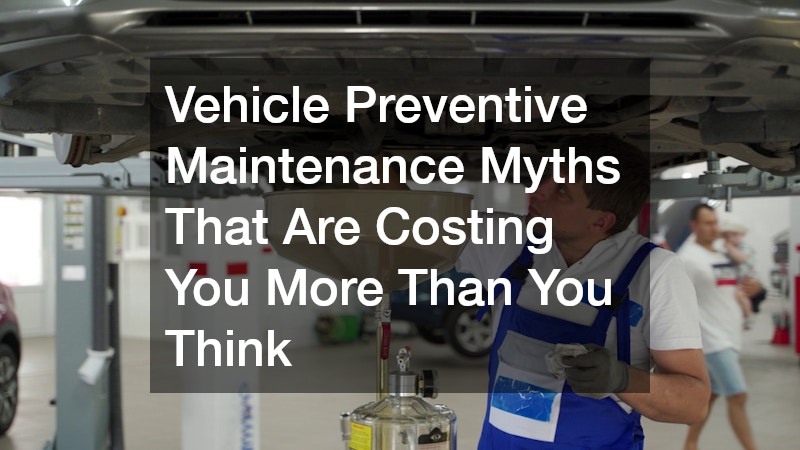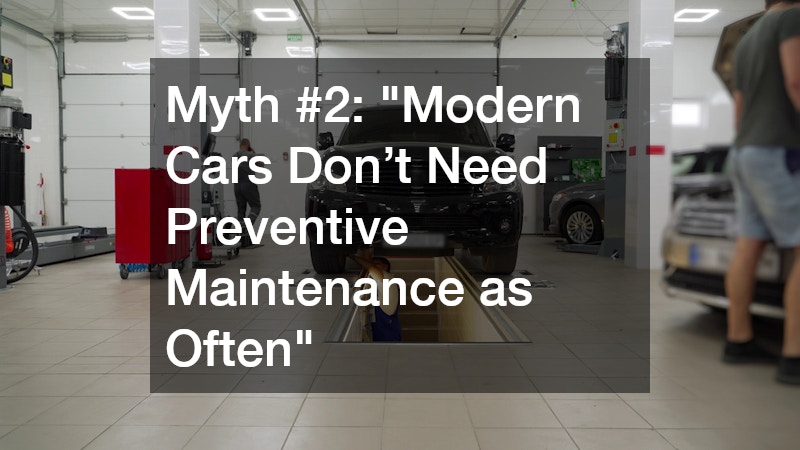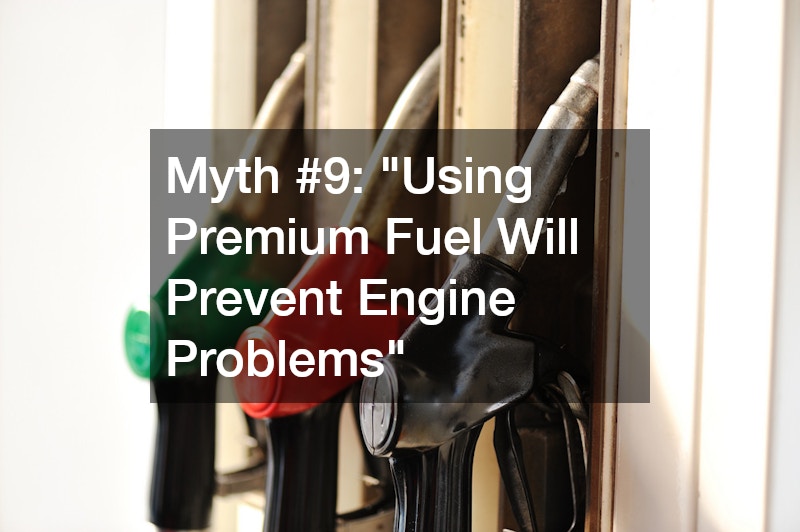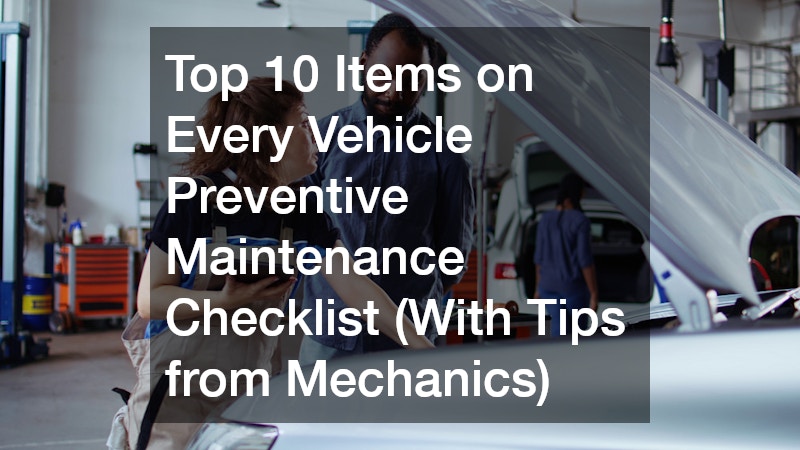
Vehicle Preventive Maintenance Myths That Are Costing You More Than You Think

For many car owners, vehicle maintenance often falls into the “when something goes wrong” category. But waiting until your car shows signs of trouble can lead to costly repairs, decreased performance, and a shortened lifespan for your vehicle. Preventive maintenance is designed to help you avoid all that, but what happens when myths and misconceptions keep you from taking the right steps?
In this article, we’re busting common vehicle preventive maintenance myths that might be quietly draining your wallet and damaging your car. Whether you’re a new driver or a seasoned vehicle owner, understanding what’s fact and what’s fiction can save you thousands in the long run.
What Is Preventive Maintenance and Why Does It Matter?
Preventive maintenance refers to regular inspections, services, and replacements that keep your car in optimal condition. This includes oil changes, fluid top-ups, brake checks, tire rotations, and more. The goal is simple: prevent problems before they happen.
Unlike reactive maintenance, which only occurs after a failure or issue, preventive maintenance keeps your vehicle running efficiently and safely. Skipping or delaying these routine checks might seem harmless in the short term, but the long-term effects can be costly—and sometimes dangerous. Still, many car owners are swayed by outdated advice or half-truths that lead to poor maintenance habits.
Let’s separate fact from fiction.
Myth #1: “If It Ain’t Broke, Don’t Fix It”
It’s a popular saying, but it doesn’t apply to vehicle care. Preventive maintenance is about catching problems before they arise, not reacting after they occur.
Why This Is Costly:
-
Delayed oil changes can lead to engine sludge and damage.
-
Ignoring brake wear can increase stopping distance and compromise safety.
-
Neglected air filters reduce fuel efficiency and strain the engine.
The Truth:
Parts wear out over time, even if they seem fine. Fluids degrade, belts crack, and batteries weaken. Stick to your vehicle’s service schedule even if everything seems okay.
Myth #2: “Modern Cars Don’t Need Preventive Maintenance as Often”

It’s true that vehicles today are more advanced and durable than their predecessors. But that doesn’t mean they’re maintenance-free.
Why This Is Costly:
-
Skipping services based on overconfidence in technology may lead to early component failure.
-
Relying solely on dashboard alerts may cause you to miss issues not covered by sensors.
The Truth:
While modern vehicles offer better durability and onboard diagnostics, they still require periodic care. High-performance engines and sensitive electronics can be expensive to fix once damaged. Follow manufacturer guidelines rather than assumptions.
Myth #3: “Oil Changes Are Only Necessary Every 10,000 Miles”
Some manufacturers promote extended oil intervals—especially with synthetic oils—but that doesn’t mean it applies to everyone.
Why This Is Costly:
-
Driving in stop-and-go traffic, dusty environments, or extreme climates degrades oil faster.
-
Ignoring oil health can lead to premature engine wear and breakdowns.
The Truth:
Your driving conditions matter. For typical city drivers or those who tow or idle frequently, changing oil every 3,000–5,000 miles may still be appropriate. Consult your owner’s manual and consider a mechanic’s recommendation tailored to your usage.
Myth #4: “Tire Rotation Is Optional”
Tires are expensive, and uneven wear shortens their lifespan. Yet many drivers skip tire rotation, believing it’s not critical.
Why This Is Costly:
-
Tires wear unevenly due to differences in load and steering dynamics.
-
Uneven wear reduces traction, safety, and fuel efficiency.
The Truth:
Regular tire rotation (every 5,000–8,000 miles) ensures even wear, prolongs tire life, and improves handling. Skipping this service leads to early replacements and increased long-term costs.
Myth #5: “Brake Pads Will Always Squeak When They Need Replacing”
Many car owners wait for the telltale squeal before replacing brake pads, but not all worn pads make noise.
Why This Is Costly:
-
Some brakes deteriorate silently until they severely damage the rotor.
-
Waiting for noise can mean you’re already past the safe wear limit.
The Truth:
Have your brakes inspected regularly—especially if you notice changes in pedal feel or braking distance. Don’t rely solely on sound to guide your brake maintenance.
Myth #6: “Coolant Doesn’t Need Changing if It Looks Clean”
Coolant (or antifreeze) regulates engine temperature and prevents corrosion. But visual inspection isn’t always reliable.
Why This Is Costly:
-
Old coolant loses its ability to protect the engine from rust and overheating.
-
Clean-looking fluid may already be chemically degraded.
The Truth:
Coolant needs periodic replacement, often every 2 to 5 years, depending on the type. Rely on the maintenance schedule, not appearance.
Myth #7: “You Can Skip the Cabin Air Filter”
The cabin air filter doesn’t affect engine performance, so many drivers neglect it. But this small filter has a big impact on your comfort and health.
Why This Is Costly:
-
Dirty filters strain the HVAC system, leading to poor airflow and reduced efficiency.
-
It allows allergens and pollutants into the cabin.
The Truth:
Change the cabin air filter every 12,000 to 15,000 miles or annually. It keeps the air clean and protects your HVAC system from premature wear.
Myth #8: “Fuel System Cleanings Are a Scam”
Many drivers dismiss fuel system cleaning as an upsell tactic. While some shops may exaggerate its necessity, that doesn’t make the service useless.
Why This Is Costly:
-
Fuel injectors can clog over time, reducing performance and fuel economy.
-
Carbon deposits affect engine timing and throttle response.
The Truth:
Periodic cleaning—especially for direct injection engines—can restore performance and prevent costly injector replacements. Ask your mechanic if it’s needed based on mileage and fuel quality in your area.
Myth #9: “Using Premium Fuel Will Prevent Engine Problems”

Unless your vehicle specifically requires high-octane fuel, using premium gas is not preventive maintenance.
Why This Is Costly:
-
Premium gas costs more but doesn’t offer added benefits for regular engines.
-
It won’t “clean” your engine or make it last longer.
The Truth:
Use the fuel grade recommended in your owner’s manual. If your car runs fine on regular fuel, paying more offers no real advantage.
Myth #10: “You Don’t Need Professional Help for Preventive Maintenance”
YouTube tutorials and DIY guides can help you understand your car, but they can’t replace professional diagnostics.
Why This Is Costly:
-
Mistakes like overfilling fluids or using the wrong parts can cause damage.
-
Missed inspections may overlook serious issues.
The Truth:
While you can do basic maintenance at home (like checking tire pressure or replacing wiper blades), it’s wise to schedule professional service for complex systems. Technicians have the tools, knowledge, and experience to catch problems early.
Myth #11: “Dashboard Warning Lights Are Always Accurate Indicators of Maintenance Needs”
Many car owners rely solely on dashboard warning lights to tell them when something needs attention. While these indicators are helpful, they don’t cover every aspect of vehicle health. Preventive maintenance involves inspecting and replacing parts before they trigger a warning—by the time a light comes on, damage may already be done.
Why This Is Costly:
-
Warning lights usually signal problems after they’ve developed, not before.
-
Some systems (like suspension, tires, or belts) have no warning indicators at all.
The Truth:
Don’t wait for your dashboard to light up before taking action. Instead:
-
Check fluid levels regularly, even without a warning light.
-
Inspect belts and hoses for visible wear.
-
Monitor tire pressure and tread manually in addition to using TPMS.
-
Follow a monthly maintenance checklist to catch small issues early.
Trusting warning lights as your only guide leads to reactive—not preventive—maintenance, increasing repair costs and vehicle downtime.
How to Build a Reliable Vehicle Preventive Maintenance Routine
Now that you know the myths, how do you stay on track? The best way to prevent expensive mistakes is to develop a proactive approach to vehicle care.
Here’s how:
-
Follow the owner’s manual: Use it as your maintenance bible.
-
Create a maintenance log: Record dates, mileage, and services performed.
-
Set reminders: Use apps or calendars to stay on schedule.
-
Choose a trusted mechanic: Build a relationship with a shop that values honesty and transparency.
-
Get regular inspections: Even if there’s no dashboard warning, have your vehicle checked seasonally.
By developing consistent habits, you avoid relying on guesswork or misinformation.
The Real Cost of Believing Preventive Maintenance Myths
The biggest problem with these myths isn’t just the cost of delayed repairs—it’s the compounded damage they cause over time. Ignoring regular care may void your warranty, reduce your car’s resale value, and increase your chances of breakdowns in unsafe situations.
Consider this:
-
A missed oil change could result in a $3,000 engine repair.
-
Skipping brake inspections could risk accidents and $1,000+ in repairs.
-
Neglecting coolant flushes might lead to a $600 radiator replacement.
These are preventable expenses that stem from misinformation, not mechanical failure. Being informed and proactive is the smartest investment any car owner can make.
Don’t Let Myths Drain Your Wallet: Trust the Facts
Preventive maintenance isn’t a money grab—it’s your vehicle’s lifeline. Many of the most expensive auto repairs stem from skipped services and ignored warning signs. By recognizing and rejecting these common myths, you’re not just saving money—you’re protecting your vehicle, your safety, and your peace of mind.
Make a habit of staying informed and checking in with your mechanic. Preventive maintenance is only expensive when you don’t do it right, or at all.
